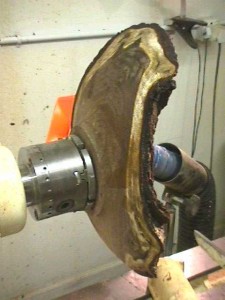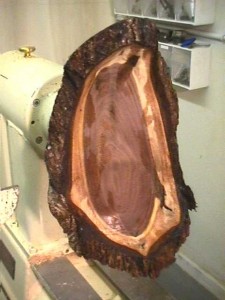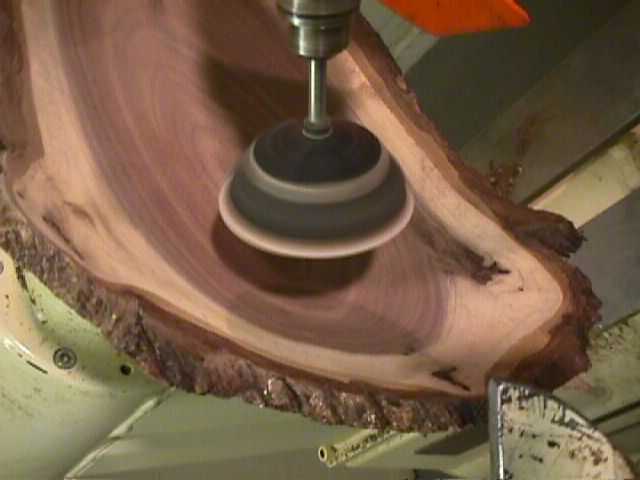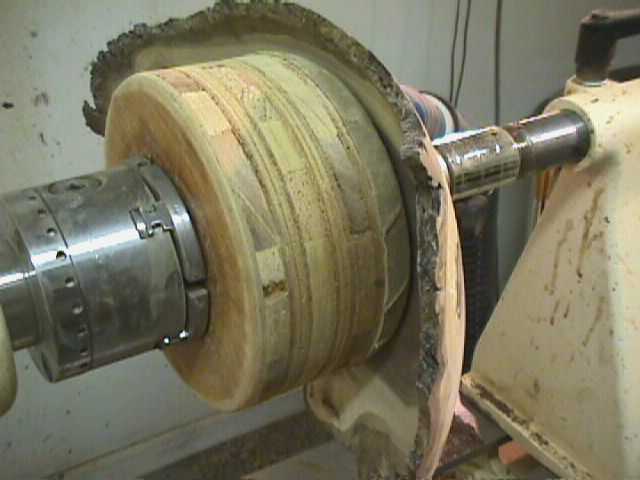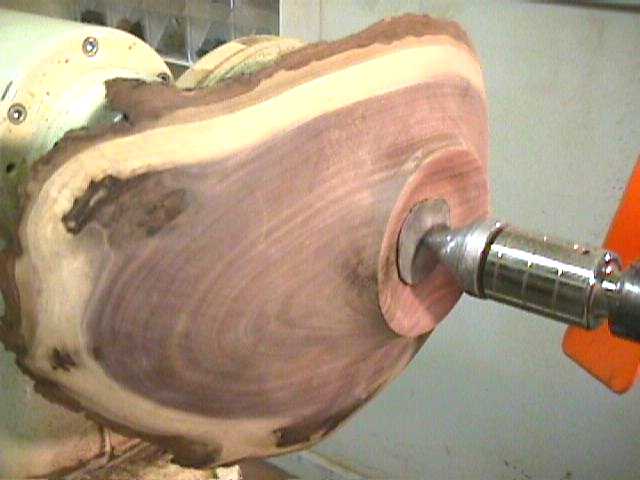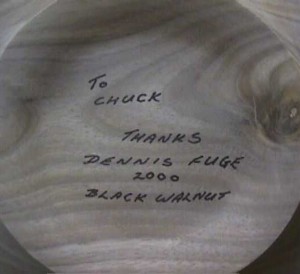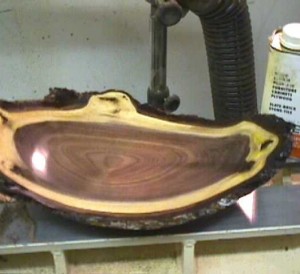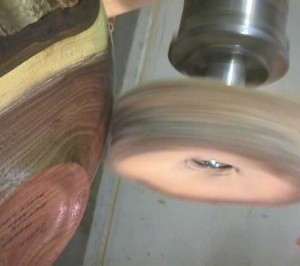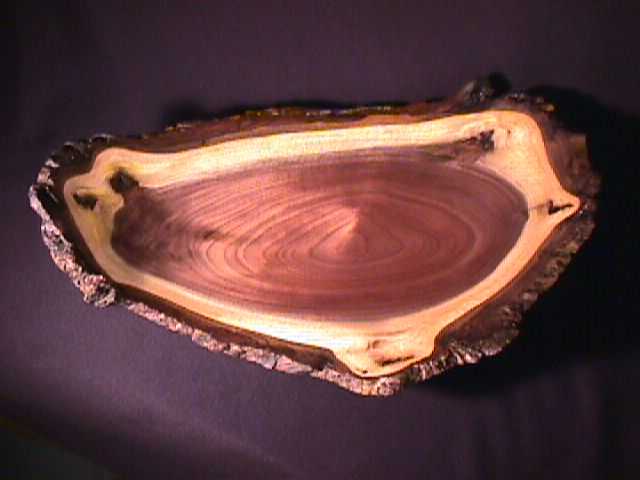A friend of mine Chuck Blewett was kind enough to bring me a few rather impressive Black Walnut logs, which I roughed out in my first project and paper bagged then on 10 October 1999. These got put away in a cool dry part of the basement.
In early April 2000 I took them all out of the cool part of the basement and opened then up in the warm workshop. This is always an interesting stage of any project as you do not know what the drying and warping process has done to your roughed out pieces. Fortunately for me only the one large bowl on the right of the picture had cracks in the end grain. All the others had warped, but no cracks.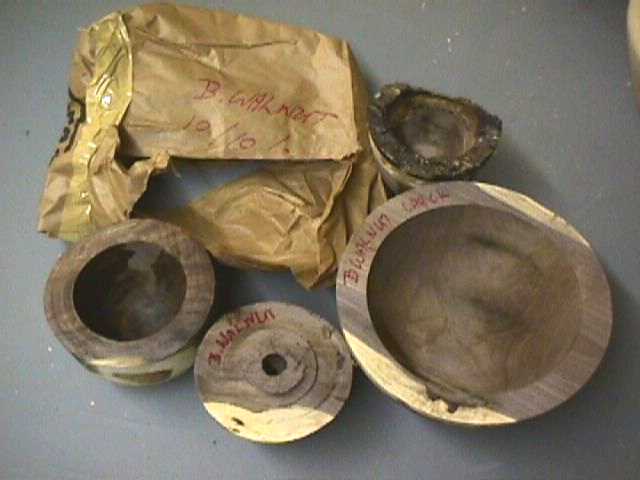
I trued up the chuck spigot and re-chucked one of the platters in my Axminster four jaw chuck using the expandable spigot jaws. These can can be used on a spigot that is anywhere from 8 cm to 10.5 cm wide.
As you can see from the picture the bark remained fully attached to the platter, which is always a concern. I had left the piece about 1 inch thick to allow of distortion during the drying process and still allow plenty of thickness for the final turning.
I used both a half and quarter inch bowl gouge to do the internal cuts. The tough part is to keep the bark on, and to do this you must come into the bowl from the outside inwards and with the flute of the gouge moving in the direction of the cut. I have heard this described as discovering the edge of the bowl with the gouge.
I then power sanded the inside, working through the grits to 320.
Once I had the inside perfect I did almost all the outside while the piece was held in the Axminster four jaw chuck. Then I removed it from that chuck and mounted it on a leather backed, plywood jam chuck, shown in the picture. At this stage you need to take gentle cuts as the piece is only being held by friction against the leather.
In this reversed position you can finish sanding the bottom and also remove all signs of the chucking method. This is not always necessary, but I feel it adds a lot to a piece and shows that the artist really cares about his work. In the picture below you can see that I have used an old sanding disk between the tale stock and the piece to prevent it marking the surface while I do some touching up.
Once the piece is fully sanded I used either a signature branding iron or a permanent marking pen to sign, type and date the piece. In this case the piece is for the friend who gave me the wood and is signed to thank him.
The piece is then given two coats of Waterlox or Danish oil one day apart and allowed to dry in the workshop for a few days for the finish to harden completely.
I then attach my buffing wheels directly to the lathe and start the three step Beal’s buffing process. The first buff is with the Tripoli compound and this is the one that really does the work of removing all the sanding marks and really brings the piece to a high finish. After the Tripoli, I move to the White Diamond and then on to the Carnauba Wax which give it a very deep shine and also a hard durable finish.
You can see that during the process I still ware my dust helmet and my protective gloves as I have through bitter experience found that both are very necessary.
Here, you can see the finished product. Black Walnut is a very interesting wood with lots of its own character. This is one wood that you must really allow to talk to you and not try to force it into something that you have predefined.

